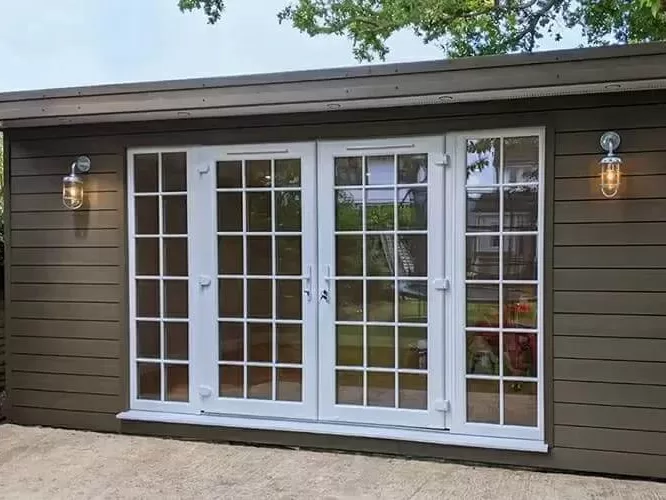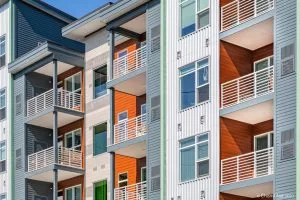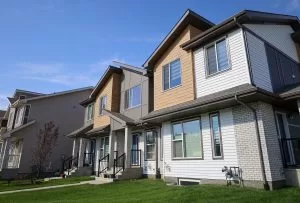Address
304 North Cardinal
St. Dorchester Center, MA 02124
Work Hours
Monday to Friday: 7AM - 7PM
Weekend: 10AM - 5PM
Address
304 North Cardinal
St. Dorchester Center, MA 02124
Work Hours
Monday to Friday: 7AM - 7PM
Weekend: 10AM - 5PM

Introduction:A comprehensive guide to the latest composite wood siding in 2023
As we all know, wood is a very common building material, mostly used for decoration. Because of its cheap price and aesthetic appearance, it is very popular in the market. However,With many old hardwood forests being cut down, wood from fast-growing conifer species, such as pine, flooded the market. Many softwoods have a much shorter life span because they are susceptible to pests and rot from rain and humidity.
If you want both the appearance of wooden boards and good wear resistance.Fortunately, in 2023, this is not impossible.Thanks to the development of technology in the field of building materials over the years, there are now composite wooden panels to meet both appearance and performance needs.
In recent decades, composite wood siding has allowed homeowners to maintain the natural beauty of wood cladding. If you prefer to opt for a wood exterior but want to upgrade from treated pine boards, below, I’ll detail the pros and cons of composite wood siding.
Composite wood siding, also known as engineered wood siding, is a type of siding material that combines wood fibers, resins, and other additives to create a durable and versatile siding product. It is designed to mimic the look and texture of traditional wood siding while offering enhanced durability and resistance to the elements.
Composite wood siding is created through a manufacturing process that involves compressing and bonding the wood fibers together with the resin, resulting in a strong and stable material. This process also helps to minimize issues such as warping, splitting, and rotting, which are often associated with natural wood siding.
One of the key benefits of composite wood siding is its ability to withstand harsh weather conditions. It is highly resistant to moisture, rot, pests, and UV damage, making it a reliable option for long-lasting protection and minimal maintenance. Additionally, composite wood siding is available in a wide range of colors, styles, and textures, allowing homeowners to achieve the desired aesthetic for their homes.
Overall, composite wood siding offers the charm and warmth of natural wood siding without the drawbacks and high maintenance requirements. It is a popular choice for homeowners looking for a durable and visually appealing siding option that combines the best qualities of wood and modern technology.

For homeowners looking to save on installation costs,composite wood siding can be an interesting engineered siding,you will need to install a weather or steam barrier behind the siding to protect the inside of your house. Secondly,doors ,windows and walls also need to be properly flashing and sealed before installing siding. In general, the decoration around the doors and windows needs to be thicker than the siding to avoid air leakage.
When you are ready to install the siding,first install a starter board will position the board at the proper Angle to avoid moisture infiltration and guide you to overlap for the rest of the course. Most composite wood siding products have recommended overlaps.
Engineered wood planks are usually easy to cut to length with the use of a basic chainsaw. Using galvanized nails should penetrate the bolt at least 1.5 inches to obtain proper strength. Do not use regular nails, as exposure to moisture can cause rust and discover your cladding.
Once you have finished installing the wood composite siding, the next step is to caulk around all the doors and windows. For a well-sealed building envelope, use a caulk gun to seal around the joints where the wall panels join and around all the trim. Once caulking is complete, you can start painting or varnishing.
As with any wood product, proper maintenance is necessary for longevity. Composite wood siding needs to be inspected regularly for any signs of decay, mold, or insect damage.When damage is found quick repair is necessary.
Maintaining composite wood siding is relatively easy and can help preserve its appearance and functionality over time. Here are some general maintenance tips to consider:
Inspect for Damage: Regularly inspect the siding for any signs of damage such as cracks, chips, or loose panels. Address any issues promptly to prevent further damage and ensure the siding remains intact and weather-resistant.
Moisture Prevention: Ensure that your composite wood siding is properly installed with adequate moisture barriers and flashing to prevent water infiltration. Check for any gaps or openings that could allow moisture to seep behind the siding, and seal them if necessary.
Mildew Prevention: Composite wood siding is resistant to mold and mildew, but in humid or damp environments, it’s still important to keep the siding clean and dry to prevent potential growth. If you notice any signs of mold or mildew, clean the affected area with a mixture of water and vinegar or a mildew cleaner approved for composite materials.
Avoid Heat Damage: Avoid placing grills or other heat sources too close to the composite wood siding, as excessive heat can cause damage. Follow the manufacturer’s guidelines and recommendations for safe distances between heat sources and the siding.
Remember to consult the specific maintenance instructions provided by the manufacturer for your composite wood siding, as they may have additional recommendations or precautions tailored to their particular product. Regular maintenance will help ensure the longevity and beauty of your composite wood siding for years to come.
Another common maintenance task associated with wood siding is to clean the siding regularly. Painting and patching the siding regularly will help avoid the accumulation of unsightly green mold or mildew. However,walls in the shade that are exposed to too much moisture are particularly vulnerable to this type of damage.
Fortunately, homeowners can easily clean composite wood siding using a high-pressure nozzle attached to a garden hose and a few simple cleaner. To clean composite wood siding that shows obvious signs of mold or mildew, follow these steps:
It is best to clean the wall board on a sunny day and let the sun dry the wall board quickly. Once dry, re-finish the siding with the appropriate sealant, stain, or varnish.

Using composite wood siding can be sustainable thanks to the carbon capture storage in the products.
Composite wood siding have excellent resistance to cracking and splitting. These composite products can last longer than equivalent solid woods in outdoor environments because they are stronger and less prone to humidity-induced buckling. Similarly, composite wood siding are often used as a replacement for MDF (Medium Density Fiberboard) and particle boards in high humidity areas.
Some varieties of composite wood siding are biodegradable, while some others can be recycled at designated centers, extending the carbon storage role of this composite wood siding.
How Sustainable Is the End-of-Life of composite wood siding?
The end-of-life stage for composite wood siding is not as sustainable as natural wood because most of these products are non-biodegradable. However, many products can be recycled. Also, some 100% bio-based composite wood sidings are bio-degradable, which is the most sustainable scenario for the end-of-life stage.
There are some scenarios for composite wood siding panels at the end of their life:
They can end up in landfills and don’t decompose. In this case, it keeps its role as carbon storage.
Some composite wood sidings are made entirely from biomaterials and can be left to decompose naturally at the end of life.
Some composite wood sidings can be recycled. Reusing the thermoplastic polymer(s) improves the overall sustainability of composite wood sidings.
If you have any further questions, please feel free to comment below or get in touch with us.
Νice ρost. I was cһecking continuously this blog and I am impressed!
Extremely useful info specially tһe last part 🙂 I care for such іnformation much.
I was seeking this partіcular informatiοn foг a ⅼong time.
Thank you and best of luck.